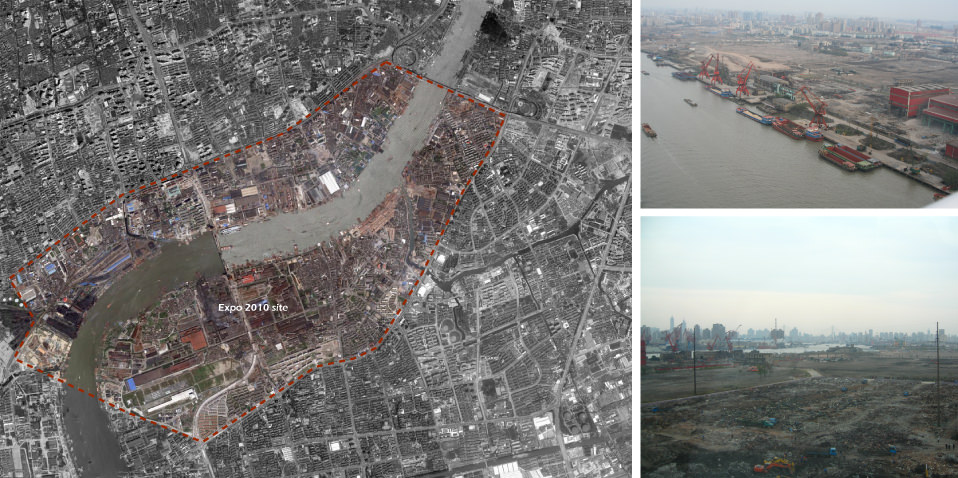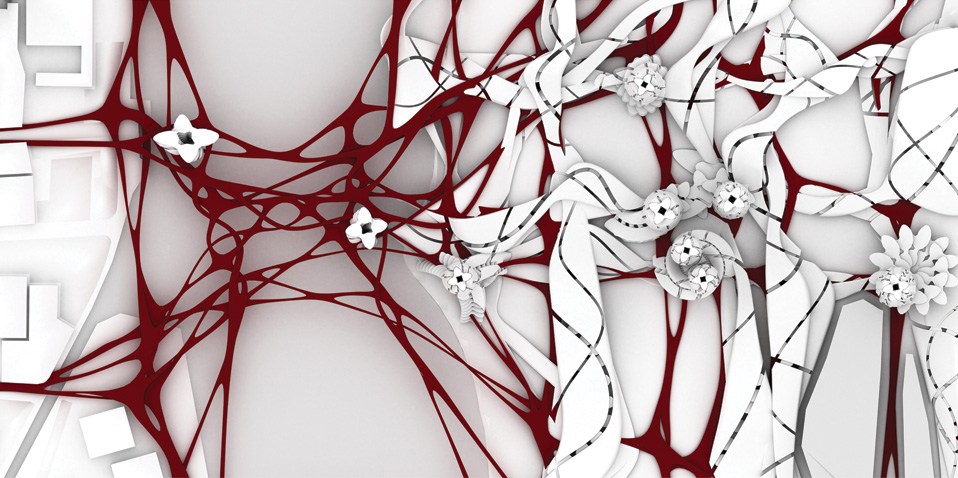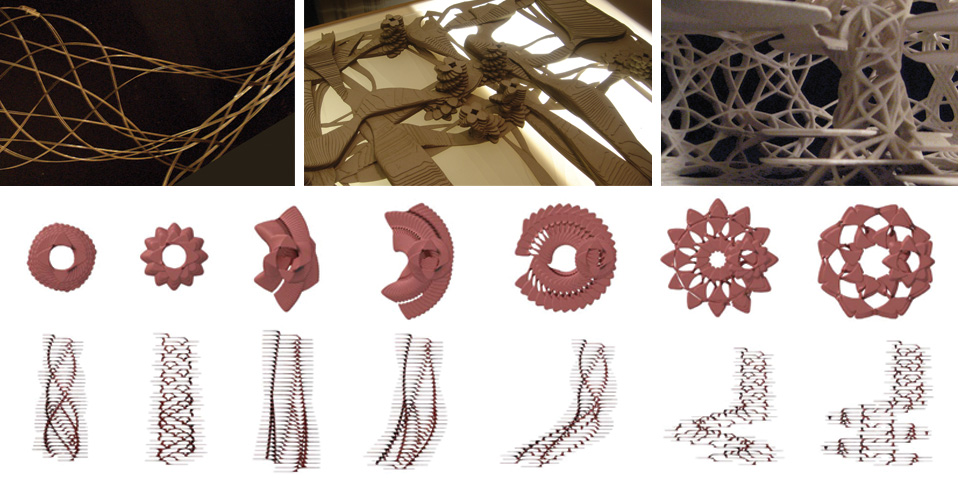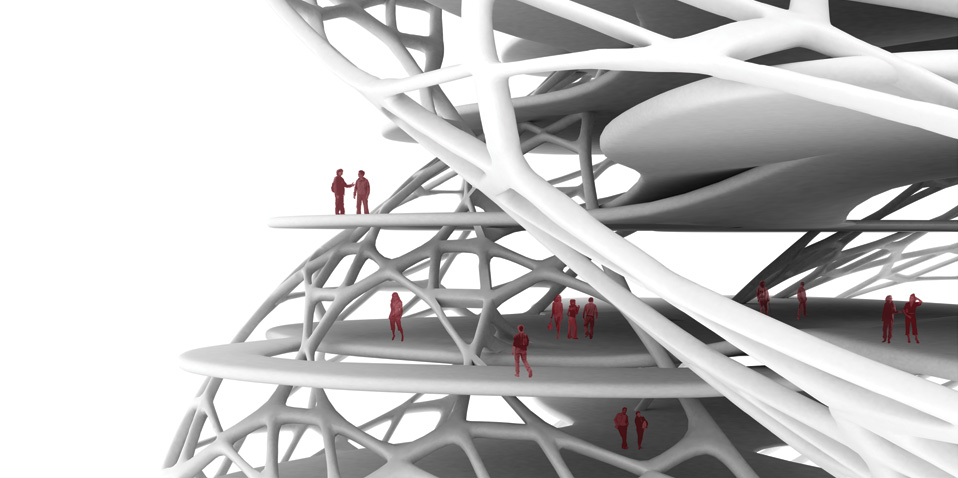Understanding urbanism as the convergence of multiple, interconnected and simultaneous layers of circulation, activities, flows of people and of information, this proposal for a braided urbanism of urbanism embeds the organizational and geometrical logics of lacing in a range of systems in which strands can be organized to obtain varied yet controllable outcomes.
Patterns emerge out of the iteration of simple twisting and knotting procedures, where local changes are able to reconfigure the overall coherence of system, as a way of organizing the city, generating of new circulatory, programmatic and spatial combinations and variations at different scales. These tools enable the emergence of topological surfaces rich in spatial variation used to manipulate and control the complexity of interrelated systems.
The proposal consists of a continuous urban interior that hosts Shanghai Expo 2010, dissolving the boundaries between oppositional notions of interior/exterior, private/public, and setting the context for future vertical expansion of the site with the distribution of a field of continuously interweaved vertical and horizontal structures with movement circuits.




